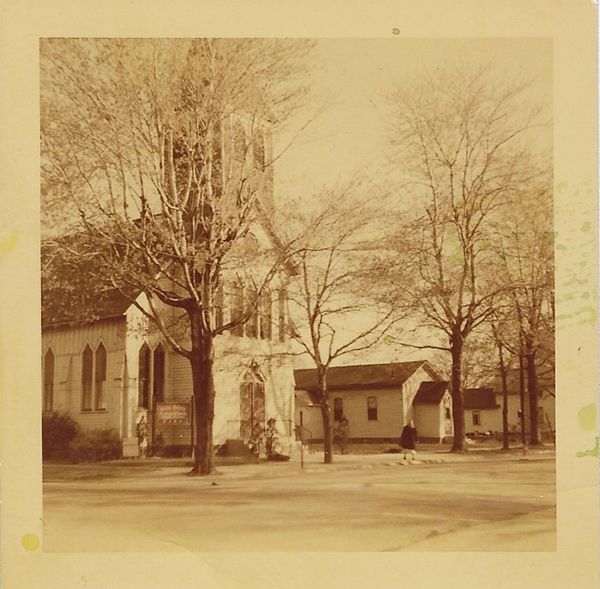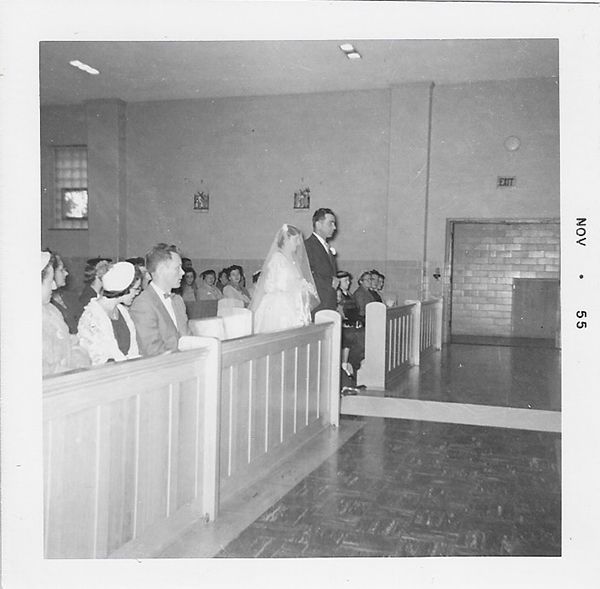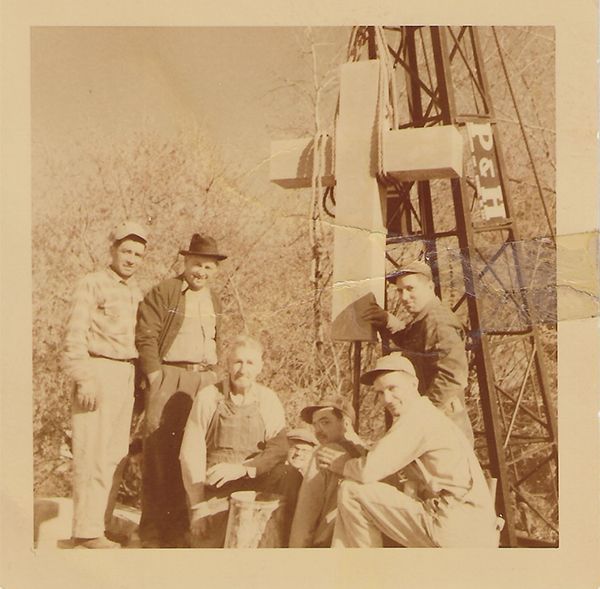History
Huron Township was organized in 1809, but settlement of the township did not truly begin until after the War of 1812. At this time, there was less threat of attack from the native Indians, and many people began to see the immense opportunities that Huron afforded with its rich farmland, river, and location on the shores of Lake Erie. As early as 1836, or possibly earlier, Catholics began celebrating Mass in private homes in Huron.Huron was, at this early time, considered a station of St. Alphonse Church in Peru (Huron County), Ohio and fell under the direction of the Diocese of Cleveland. Missionary priests visited remote areas like Huron and Sandusky to celebrate Mass. Fr. Francis Xavier Tschenhenss, a Redemptorist missionary priest, was the first priest to visit Huron from his parish in Tiffin. Fr. Tschenhenss continued visiting Huron until 1839, after which point he was transferred. From 1839 until 1875, Huron was considered a station of Sandusky and was attended by priests from Holy Angels Church. From 1875 through 1878, Huron was attached to the station at Milan and was under the care of Fr. John J. Puetz. Fr. Puetz did much to revive the Faith in Huron but was unable to build a church building. Thus, Mass continued to be held in private homes.
In May 1878, the care of the Catholics of Huron was once again transferred. The Church at Vermilion was assigned a resident pastor in 1878 who was also given responsibility for Huron. From 1882 until 1889, Huron was under the leadership of Fr. M.S. Smith. Fr. Smith rallied the Catholics in Huron and started a building fund.
His efforts were greatly rewarded as all of the Catholics in Huron and many non-Catholics contributed quite generously. Fr. Smith was greatly encouraged. He purchased a lot fronting Rensselaer Street (Route 6) in December of 1887 for $300. Fr. Smith then had plans drawn for a 40 x 70 foot frame church. Construction began early in October 1889. Unfortunately, Fr. Smith did not see his efforts come to fruition, as he was assigned to another church.
Both Huron and Vermilion were without a priest from October 1889 until January 1890; yet, the building committee, under the direction of Bishop Richard Gilmour of the Cleveland Diocese, oversaw the construction of the new church. In January 1890, Fr. Ignatius J. Wonderly became the pastor at Vermilion and had Huron as a mission. Fr. Wonderly enthusiastically took charge of the church construction at Huron. He first celebrated Mass in the new church on Pentecost Sunday ,May 25, 1890. St. Peter’s Church was officially dedicated on June 15, 1890, with much fanfare. Attendees, nearly 2,000 in number, arrived via rail, coach, and steamer from Norwalk, Elyria, Sandusky, Port Clinton, etc. Bishop Gilmour, assisted by six other priests, performed the mass and dedication ceremony for the new church. The church cost $3,000 to build, exclusive of the altars, pews, and other equipment. As a show of dedication of the Catholic community in Huron, the church was fully paid for within one year of its completion. Anticipating future growth, Fr. Wonderly purchased two adjoining lots for $400 around 1891. These lots were intended for a parish school and a pastoral residence.
St. Peter’s continued to be a mission of Vermilion and its 65 families were attended by the priests assigned to Vermilion. In 1902, Fr. N.W. Horst transferred his residence from Vermilion to Huron. Thus, Huron gained parish status and Vermilion became a mission of Huron. Vermilion remained a mission of Huron until 1924. In 1910, St .Peter Church became a part of the Toledo Diocese.
The congregation of St. Peter’s continued to grow over the next several decades. In February of 1941, Fr. Matthew Clancy was appointed pastor. He saw the necessity for a larger church. Despite being the war years, Fr. Clancy quickly raised nearly $90,000 for the building fund. Before Fr. Clancy’s plans could be realized, he was transferred to another parish. Fr. Francis Schmuck succeeded Fr. Clancy but was unable to push forward any building plans due to his poor health. Fr. Schmuck resigned in 1952 and was replaced by Fr. Joseph Pastorek, who enthusiastically resumed plans for expansion at St. Peter’s. Ground was broken for the parish school and the Sisters’ convent in 1952. Both were completed swiftly and dedicated on April 12, 1953 by Bishop George Regring. The school contained four classrooms on the upper level, and the lower level (formerly the gymnasium) was used as a temporary church with a seating capacity of 500. The Sisters of St. Francis came to St. Peter’s to administer the new school.
As the population of Huron swelled in the mid-1950s, four new classrooms and the cafeteria were added to the school. By the late 1960s, a larger church was needed to accommodate the burgeoning parish of 825 families. Under the leadership of Fr. William Pfeifer, a new church, designed by Thurman J. Peabody of Norwalk, was constructed. It reflected the liturgical changes called for by Vatican II. The circular church, which features twelve arches that represent the twelve apostles, was erected in order to conserve space on the small lot and also to bring the people of the congregation closer to the altar for a feeling of unity. The main church seats 900, and the chapel seats 36. The church was dedicated on November 30, 1969 by Bishop Donavan. The new church cost $660,000, and it took ten years to pay off the mortgage. The large room in the school building, which had served as the temporary church, was converted to a gymnasium. In the mid 1980’s, the convent was converted to a school structure which initially housed the kindergarten and later housed St. Peter Pre-School.
A new building fund was started in 1996 for the construction of an addition that would connect the church to the school building. This space was intended to be used for classrooms, a school library, and a gathering area. Ground was broken for this addition in July of 1996 and was completed in May of 1998.
In early 2012, an anonymous donor gave a million dollars to the parish to be used to build a new gymnasium. Construction began that spring, and the building, named “The Rock” was dedicated on January 11th, 2013. Planning and construction then began on the old gymnasium in the school building to build new rooms for pre-school, music, art, reading, and speech. These rooms began being used in early 2014, and the old pre-school was demolished during spring break 2014.
For well over 100 years, the Catholic community of Huron has supported St. Peter’s in amazing ways. The thriving parish of St. Peter’s and the St. Peter School stand as a testimony of the faith of those early Catholics who sacrificed so much.




